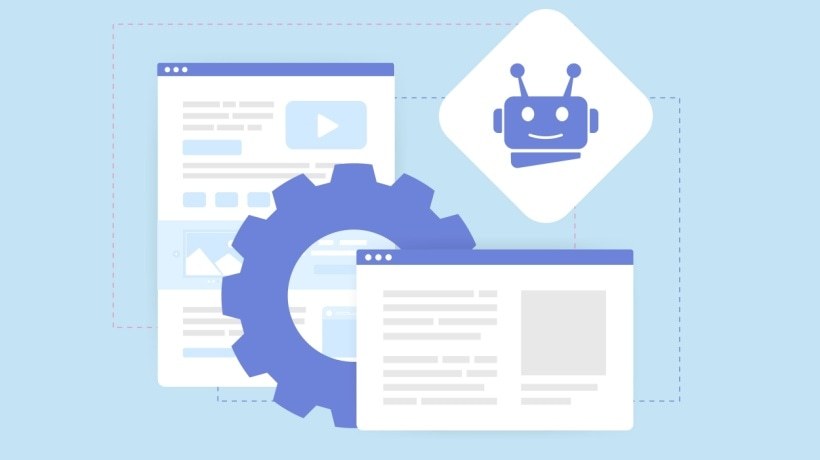
Next-Gen Learning With No-Code: Smarter, Faster L&D

The Evolution Of Corporate Learning
In today’s fast-evolving world of work, expectations from corporate learning have dramatically shifted. Employees don’t just want training—they expect learning experiences that are fast, relevant, personalized, and always-on. Traditional systems, unfortunately, are falling behind. Slow course deployment, rigid LMS platforms, one-size-fits-all content, and manual tracking still dominate the scene. But what if you could design smarter, faster, and more scalable learning systems—without needing a team of developers or waiting months for IT bandwidth? With the rise of no-code platforms and Artificial Intelligence (AI), that possibility is no longer a distant dream. This article explores how these two technologies are reshaping the Learning and Development (L&D) landscape so that you can leverage them to build future-ready, next-gen learning with no-code
What Is Next-Gen Learning With No-Code?
Next-gen learning with no-code goes beyond basic eLearning or digitized classroom modules. It represents a paradigm shift in how learning is created, delivered, and adapted. It’s driven by four core characteristics:
Smarter
It’s built on data and personalization, adapting content and learning paths to the unique needs of every learner.
Faster
It enables rapid development and deployment of training experiences, cutting months of build time into days or even hours.
Scalable
It supports learning at scale, across geographies, departments, and changing business needs.
Interactive
It drives higher engagement with interactive interfaces, real-time feedback, and adaptive content.
Together, these qualities define a learning model that aligns with today’s fast-moving business environment and the modern learner’s expectations.
Why No-Code Is A Game Changer For L&D
In a conventional setup, building learning apps, portals, and feedback systems requires developer support and long cycles of testing and deployment. No-code platforms disrupt that cycle by empowering nontechnical users—like L&D professionals—to build these systems through visual interfaces and drag-and-drop functionality. Here’s how next-gen learning with n0-code helps:
Build In Hours, Not Weeks
Need a new compliance module or onboarding checklist? Instead of submitting a tech ticket and waiting, you can design and deploy it yourself, often within the same day.
Automate The Routine
Automate tasks such as certificate generation, course assignment, learner reminders, and post-training surveys, freeing your team from repetitive admin work.
Customization At Your Fingertips
Design unique learning portals for different roles, locations, or experience levels. Tailor experiences to your organizational structure without technical overhead.
Real-Time Responsiveness
Respond to learning gaps, business shifts, or feedback instantly, not months later. No-code gives you the agility to keep learning experiences current and relevant.
In short, no-code turns L&D teams into visual builders and innovators, not just content managers.
AI: The Brain Behind Smart Learning
While no-code enables speed and control, AI adds intelligence, automation, and foresight to your L&D strategy. Here’s how AI transforms learning into a smarter system:
Personalized Recommendations
AI algorithms analyze learner behavior, role, and performance data to deliver customized content so employees see the most relevant learning at the right time.
Conversational Interfaces
AI-powered chatbots can assist learners by answering questions, suggesting modules, or guiding them through their learning journey—mimicking a real-time digital mentor.
Content Generation And Summarization
Save hours of Instructional Design effort. AI tools can help generate quizzes, microlearning snippets, FAQs, and course summaries based on existing materials.
Predictive Insights
Anticipate challenges before they surface. AI can detect early signs of disengagement, skills gaps, or low completion rates, allowing your team to intervene before it’s too late.
By layering AI into your learning ecosystem, you move from static, reactive programs to adaptive, intelligent learning experiences.
Individually, no-code platforms and AI each offer powerful advantages for Learning and Development. No-code platforms simplify and accelerate the creation of digital learning solutions, while AI brings intelligence, automation, and insight. But the real transformation happens when these technologies are used together. The synergy between no-code and AI results in a learning infrastructure that is not only fast and flexible but also smart, personalized, and highly responsive to learner and business needs.
Take program creation, for instance. No-code tools allow L&D professionals to build courses, portals, and workflows using drag-and-drop interfaces, eliminating the need for developers. When AI is layered into this process, it enhances content creation with smart recommendations, automatic tagging, and contextual adjustments, streamlining both design and deployment. Similarly, the learner experience becomes more refined. While no-code enables customized portals and role-specific flows, AI adds adaptive User Experiences through chatbot guidance and real-time content suggestions based on individual performance.
Analytics, too, benefits from this combination. No-code platforms can create real-time dashboards that track engagement, completion rates, and skill progression. AI takes it a step further by predicting dropouts, analyzing sentiment from learner feedback, and uncovering hidden trends through pattern recognition. Feedback loops become smarter and more actionable, with automated collection workflows built using no-code tools and AI offering smart nudges and emotional tone analysis to understand learner needs more deeply.
Together, no-code and AI empower L&D teams to move quickly, respond to change efficiently, and deliver personalized, scalable learning experiences—all without overloading technical teams or burning through budgets. This intelligent agility is what sets next-gen learning with no-code apart, enabling organizations to upskill at speed and stay ahead in a dynamic business environment.
Use Case Spotlights: What Next-Gen Learning With No-Code Looks Like
Let’s explore some real-world-inspired examples of how no-code and AI are reshaping learning in different industries.
1. AI-Powered Compliance Training
A healthcare organization needed to improve its compliance rates after several audit flags. Using AI, they analyzed past audit failures and identified high-risk roles and training gaps. A no-code platform was then used to automate training assignments, send adaptive reminders, and generate real-time reports.
- Result
Compliance completion time dropped by 40%, with a 98% success rate before the next audit.
2. Performance-Based Upskilling
An insurance firm connected its performance review system with its learning modules. AI monitored KPIs and identified patterns of underperformance tied to specific skills gaps. L&D managers used a no-code interface to build and launch targeted microlearning programs.
- Result
A 15% boost in productivity within 3 months for upskilled teams.
3. Interactive Leadership Programs
A consulting company was redesigning its leadership development journey. Using no-code, it built branching, role-specific programs across video, assessments, and case studies. AI added gamification, nudges, and adaptive feedback loops to maintain engagement.
- Result
85% of participants completed the full track, with a 4.7/5 satisfaction score.
How To Get Started With No-Code And AI In L&D
Transitioning to a next-gen model doesn’t require a full system overhaul on day one. Here’s a step-by-step approach to begin your journey:
1. Identify Bottlenecks
Audit your current L&D processes. Where are the delays? Which areas feel repetitive or inflexible?
2. Define What Agility Looks Like
Set goals. Do you want faster program rollout? Better personalization? Real-time analytics?
3. Start Small
Pick a high-impact, low-risk area to pilot—like onboarding, compliance, or soft skills training. This allows you to experiment, measure, and refine without large-scale disruption.
4. Empower Your Team
Train L&D professionals in using no-code platforms and basic AI concepts. Encourage them to ideate, test, and iterate.
5. Measure What Matters
Track engagement, learning velocity, completion rates, and business impact. Use these metrics to scale successful initiatives and improve others.
Best Practices For Successful Implementation
Making the shift to next-gen L&D is about more than just technology, it’s about mindset, strategy, and execution. Here are key tips to succeed:
- Involve stakeholders early
Get buy-in from HR, IT, and business leaders to ensure alignment and support. - Design for the learner first
Use empathy-driven design. AI can help guide, but human insight makes it resonate. - Encourage cross-functional collaboration
Bring together trainers, analysts, and team leads for better program design. - Set clear KPIs
Track agility (time-to-launch), effectiveness (completion/engagement), and relevance (skill transfer rates). - Adopt an iterative mindset
Think in sprints. Test, learn, and improve continuously.
Today, corporate learning is no longer a background process; it’s a strategic driver of business success. Gone are the days of static modules and checkbox compliance. In their place, organizations now demand learning systems that build real capabilities, foster adaptability, and generate measurable impact.
No-code and AI empower L&D teams to meet these demands head-on. They make it possible to respond to shifting needs in real time, personalize learning journeys for every individual, and scale programs without ballooning costs. Repetitive processes are automated, while insights from real-time data guide better decisions and smarter strategies.
More than just tools, no-code and AI mark a shift in how L&D operates, bringing it out of the back office and into the core of business transformation. With the right mindset and approach, learning leaders can use these technologies to become proactive enablers of change, rather than reactive support functions.
The question isn’t if your L&D systems need to evolve but how fast you’re willing to lead that evolution. The future of learning is agile, intelligent, and deeply human-centered. The wave has already started. Will you lead it—or be left behind?
Source link



